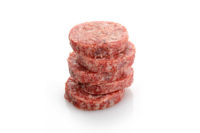An experienced product developer told me this recently. He didn’t mean it in a derogatory sense. In fact, sustainable packaging is an important part of his work. It’s just that he subscribes to a more precise view when defining sustainability as it relates to packaging.
In his mind, it is one aspect of many things happening at once. Reducing energy consumption in processes, down-gauging materials, redesigning packages to take up less space during storage and distribution, are critical measures in responsible environmental stewardship, to name but a few. However, his vision of a sustainable package is based solely on the amount of renewable materials used to make it.
Recent history demonstrates that attempts at package formats with high content of renewable materials either haven’t been fit for use or their cost was too high. So resin suppliers and packaging manufacturers continue pushing ahead to create formats that better balance performance and price versus traditional fossil-based materials. And the industry focuses on programs that take advantage of the more immediate and broader economic impact sustainability initiatives can have on business.
But, innovation is a dynamic force that won’t be constrained, and some perceptible developments are occurring in the area of sustainable packaging. There are some new materials available for testing in different formats like trays and thermoform roll stock, and they carry come some exciting performance claims.
To begin, these materials report to have up to 80 percent renewable content. That bio-based content is noted as starch, which can come from a number sources, including corn, cassava, and various grasses. The surprising claim, according to sources, is that these materials exhibit high gas barrier properties equal to, and in some cases superior to, conventional plastics. These properties are enabled by oxygen transmission rates up to 10 times better than the market norm, say those same sources.
If accurate, such functional performance could have some intriguing effects on extending the shelf life of fresh meats and cooked products. Now consider adding another bio-based component to this mix. Recently, it has been reported that sugarcane-derived polyethylene materials have been developed that perform like conventional PE just that their feedstock is renewable.
If these products all live up to their billing, there still is the specter of cost lurking about. The marketplace has yet to see a real balance of value delivered and affordable price. In this case sources say that the prices are competitive with conventional alternatives.
Does that mean the same price or something very close? I don’t know, but my product developer’s sustainable package seems to be shaping up quite well.






Report Abusive Comment